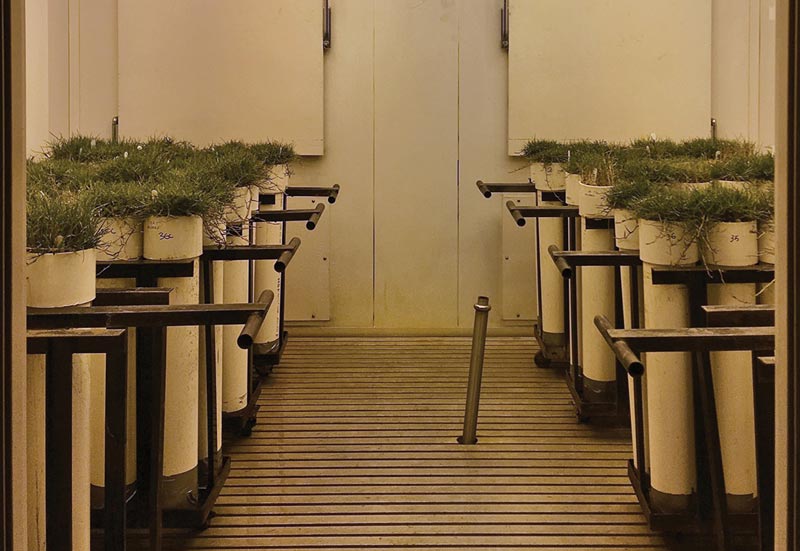
Photo by Krishna Katuwal
The objective of our study was to identify drought-tolerant seashore paspalum genotypes by characterizing their morphological and physiological responses to drought stress.
Fifteen genotypes of seashore paspalum (Paspalum vaginatum) were grown in a controlled growth chamber environment under two water treatments: well-watered or water-stressed (withholding water for two weeks).
A wide range of responses to drought were observed in the tested genotypes. Seashore paspalum genotypes such as SeaIsle 1 and PI647891 had the best drought performance, whereas SeaStar and PI614680 performed relatively poorly in terms of turf quality, percent green cover and dark-green color index. Other genotypes had intermediate responses.
The genotype SeaIsle 1 performed well and had the greatest leaf water content of 54% at the end of stress treatment. SeaIsle 1 also had greater photosynthesis, transpiration and stomatal conductance than poorer-performing genotypes. Leaf water-use efficiency of SeaIsle 1 was nine times greater than the average leaf water-use efficiency of SeaStar or PI614680. SeaIsle 1 also had greater cell membrane stability, as indicated by lower electrolyte leakage compared with many other genotypes.
In general, after a week of drought stress, better-performing genotypes had greater osmotic adjustment than poorer-performing genotypes. Our findings indicated a wide variation exists in drought tolerance in seashore paspalum, and the better-performing genotypes could be a source of drought-tolerance traits for improving turfgrass stress tolerance.
— Krishna Katuwal; Viktor Tishchenko, Ph.D.; and David Jespersen, Ph.D., University of Georgia, Griffin, Ga.
Editor’s note: An earlier version of this summary was published in the 2019 ASA-CSSA-SSSA Meeting Abstracts, ASA-CSSA-SSSA, Madison, Wis.
Teresa Carson is GCM’s science editor.